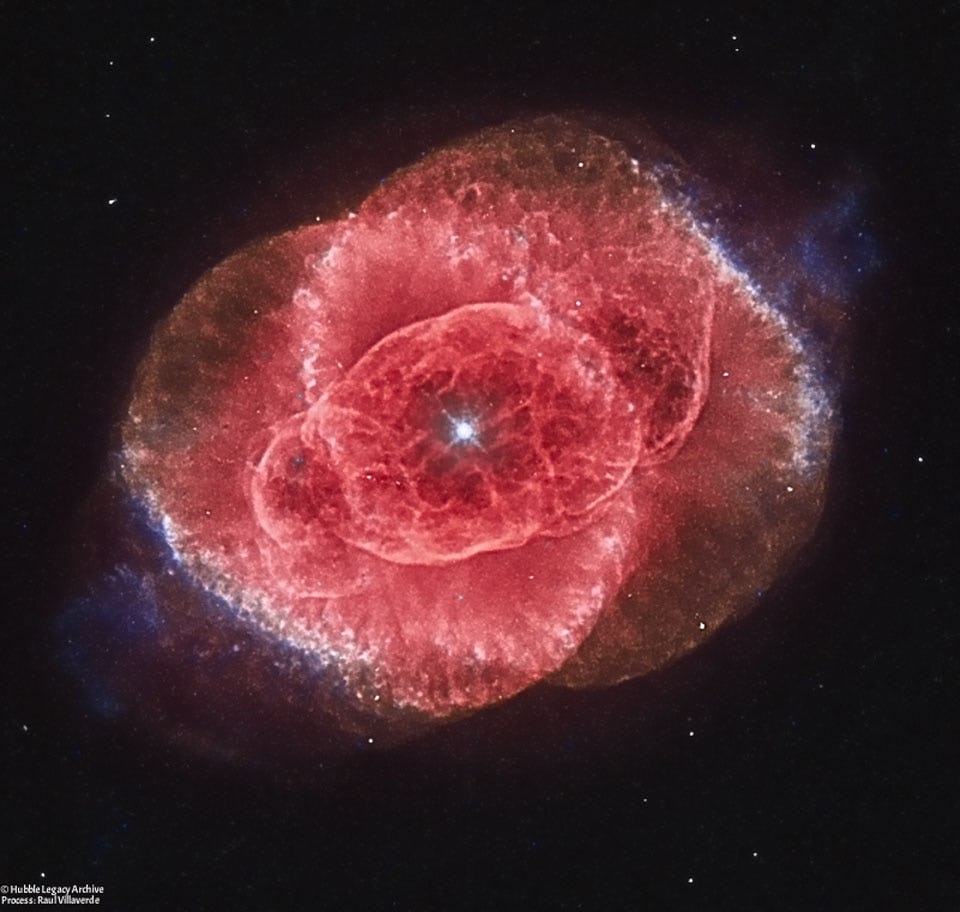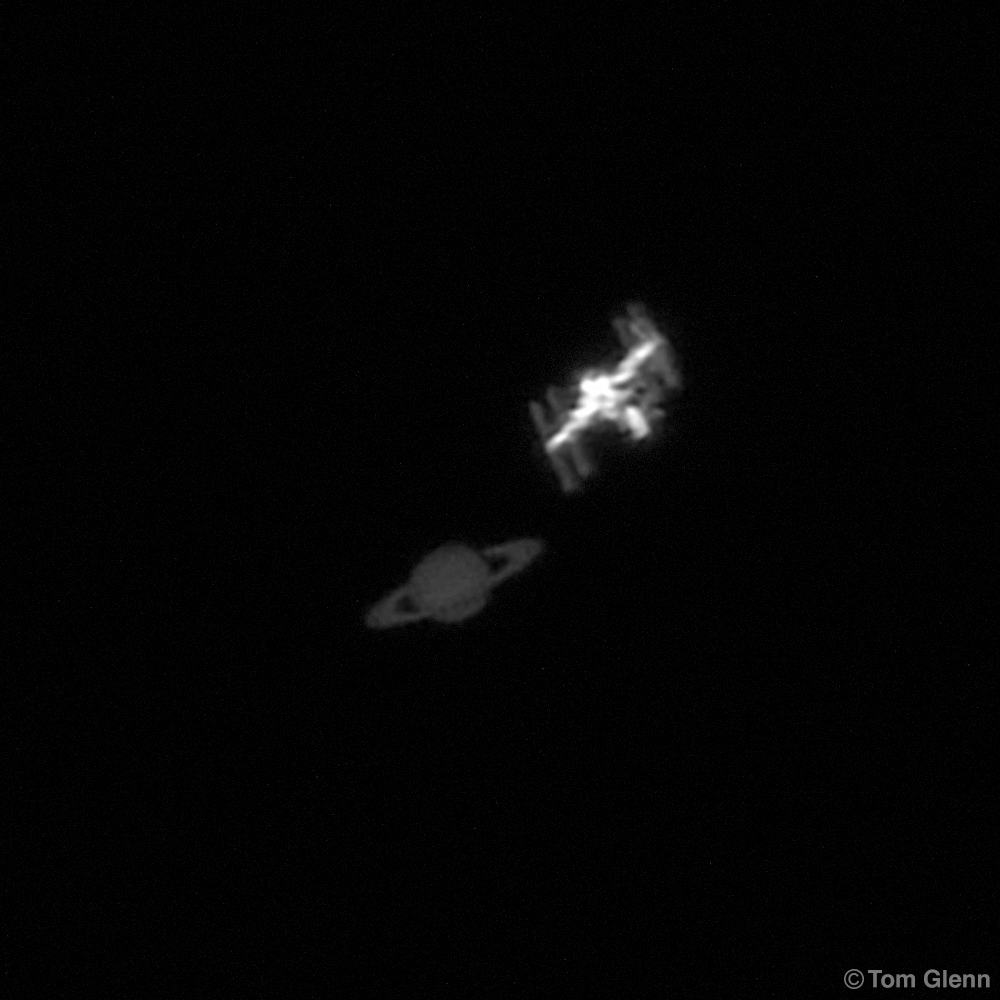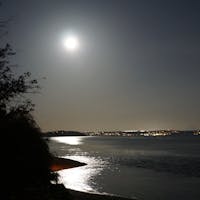Why do eyes leak,
when words are said,
"I want to be with my father,"
who has been gone for
over thirty years.
I observed this, behavioral
change of the past several months.
Public Posts Bellevue, WA Bellevue, WA (zoom)
Sing again to me,
about a savage love.
Young hearts, rapidly beat,
when love was lost,
by indifference from
the likes of he.
Do you have a heart,
when you leave, alone
encouraging us to part?
NASA Astronomy Picture of the Day:
Three thousand light-years away, a dying star throws off shells of glowing gas. This image from the Hubble Space Telescope reveals the Cat's Eye Nebula (NGC 6543), to be one of the most complex planetary nebulae known. Spanning half a light-year, the features seen in the Cat's Eye are so complex that astronomers suspect the bright central object may actually be a binary star system. The term planetary nebula, used to describe this general class of objects, is misleading. Although these objects may appear round and planet-like in small telescopes, high resolution images with large telescopes reveal them to be stars surrounded by cocoons of gas blown off in the late stages of stellar evolution. Gazing into this Cat's Eye, astronomers may well be seeing more than detailed structure, they may be seeing the fate of our Sun, destined to enter its own planetary nebula phase of evolution ... in about 5 billion years.
Photo by Raul Villaverde
"Formally The State of Tennessee v. John Thomas Scopes, and commonly referred to as the Scopes Monkey Trial, s The Trial which started on July 10 1925 in which a high school teacher, John T. Scopes, was accused of violating Tennessee's Butler Act, which had made unlawful to teach human evolution in any state-funded school."
"The trial publicized the Fundamentalist–Modernist controversy, which set Modernists, who said evolution was not inconsistent with religion, against Fundamentalists, who said the Word of God as revealed in the Bible took priority over all human knowledge. The case was thus seen both as a theological contest and as a trial on whether evolution should be taught in schools". Read more
Photo shared by Heather Cox Richardson from Letters from an American
Burning the candle
at both ends,
should not be a game
of let's pretend.
Make your best choice.
Don't change your mind,
you can now rejoice.
Happiness you'll find.
NASA Astronomy Picture of the Day:
Soaring high in skies around planet Earth, bright planet Saturn was a star of June's morning planet parade. But very briefly on June 24 it posed with a bright object in low Earth orbit, the International Space Station. On that date from a school parking lot in Temecula, California the ringed-planet and International Space Station were both caught in this single high-speed video frame. Though Saturn was shining at +0.5 stellar magnitude the space station was an even brighter -3 on the magnitude scale. That difference in brightness is faithfully represented in the video capture frame. In the challenging image, the orbiting ISS was at a range of 602 kilometers. Saturn was about 1.4 billion kilometers from the school parking lot.
Photo by Tom Glenn
".... Johnson’s premiership fell because it seemed to recognise no distinction between what is true and what is politically expedient. Once that distinction ceases to matter, democratic discourse becomes unsustainable and political communication becomes a matter of permanent decoding..." Read more
Glowed red
the ridge,
as sun rise
came.
My last
viewing was
somewhat the
same.
Where has
love gone?
Away from
me now,
please tell
me, please
for I know
not how,
to approach
a stranger,
a girl
in my
dreams,
who I
will see,
again or
perhaps
never to
be seen
again.
Words written now,
transform into glass,
no matter the lies,
the truth may not pass.
Inflation is high,
blame corporate greed,
as company profits rose,
costing all in need.
Back in history now,
time to manage the seed,
for raising prices hurts
consumers. Indeed.








.jpg?fit=crop&w=280&h=280&q=93)







.jpg?fit=crop&w=200&h=200&crop=faces)
_(2899125158)-R.jpg?fit=max&w=1200&h=1200&q=48)








 - Copy.jpg?fit=crop&w=280&h=280&q=93)














